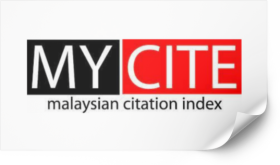Model-based Performance Comparison of Different Configurations of Evaporative Cooling Systems in various Climates of Pakistan
Keywords:
Direct Evaporative Systems, Indirect Evaporative Systems, Falling Film Evaporation, Pakistan, MATLABAbstract
The standard of living is continuously improving in all climatic areas of the world causing higher energy demands especially in building sector. The numerous cooling techniques that are being used are very energy intensive and also causing environmental hazards due to hydro chlorofluorocarbons (HCFCs) and chlorofluorocarbons (CFCs). Therefore there is need to look for more energy efficient, cheaper, and environmental friendly cooling technologies such as evaporative cooling.The current study is focused on performance analysis of various configurations of evaporative cooling including direct evaporative cooling, indirect and falling film. Initially, a detailed mathematical model of these configurations is developed and then MATLAB code is developed for performance analysis under various operating conditions like air temperature and humidity. In view of performance dependence of these configurations on climatic conditions, comprehensive transient simulations are performed in five climatic zones of Pakistan including Islamabad, Peshawar, Lahore, Multan and Karachi considering their six month cooling duration data from April to September. The performance parameters considered are cooling capacity and outlet temperatures.The results obtained established that direct systems perform best in dry and hot weathers of Multan and Lahore even providing 2-3ºC more temperature reductions than falling film and indirect evaporative cooling systems and provide maximum cooling capacity of 2.4kW. Indirect system performs well in Islamabad and Peshawar providing 3-3.5ºC more reductions than direct and falling film configurations. Maximum cooling capacity of 2.29kW is required to meet the same outlet conditions, while falling film performs best than the other two configurations in all climates including humid climate of Karachi. Maximum temperature reduction of 26.1ºC is achieved in Lahore during the month of June. Maximum cooling capacity of 2.01kW is obtained to achieve outlet temperature equal to wet bulb.
Downloads
Published
How to Cite
Issue
Section
License
Copyright (c) 2018 Progress in Energy and Environment

This work is licensed under a Creative Commons Attribution-NonCommercial 4.0 International License.








